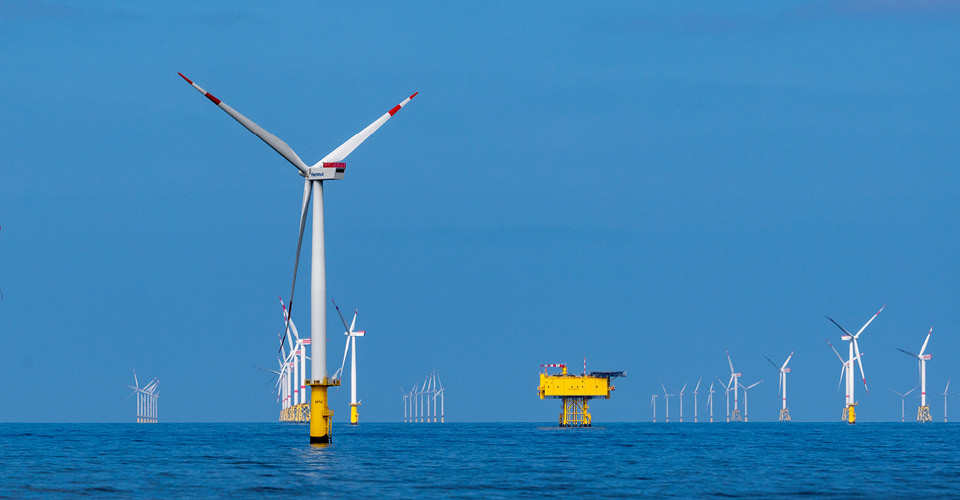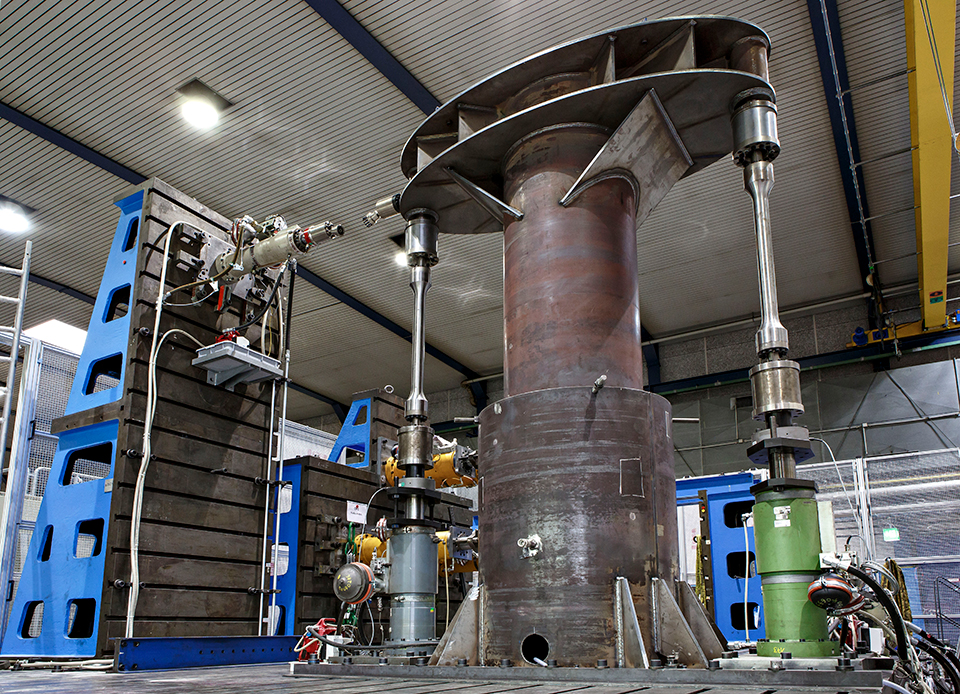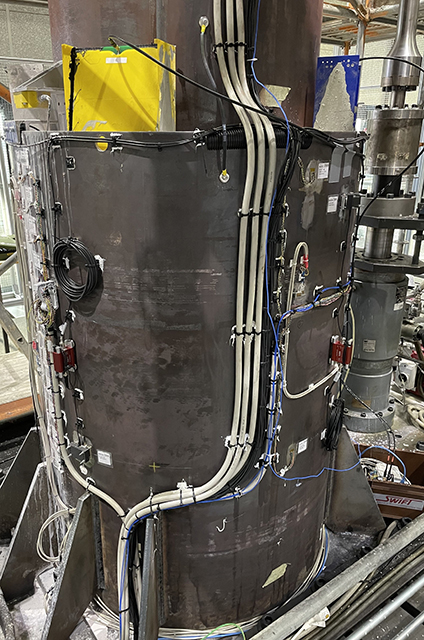Method synthesis of radar and reference sensor technology for damage detection


The grout connection structure for WTGs consists of a space filled with high-performance concrete between two steel components (e.g. a pile driven into the seabed and a support structure for the tower of the WTG) turned on top of each other. This structure is widely used in the offshore sector and is thus exposed to harsh weather conditions and high dynamic loads due to wind and waves. This can lead to wear and damage, reducing the lifetime of the turbines. In order to permanently ensure the structural integrity of the highly stressed grout connection and to initiate maintenance measures in a targeted manner, sensor systems that evaluate the structural condition during operation with a high degree of automation are of great importance. This is especially true for small damages (e.g. cracks and washout), which are not fully detectable so far.
Within InsituWIND, a method synthesis of radar and reference sensor technology is combined for the first time for a novel structural monitoring of the grout joint of WTGs. For this purpose, radar antennas are applied directly to the concrete structure of the grout joint in order to detect typical damage (e.g. cracks and washouts) at an early stage by means of guided electromagnetic waves and reference conditions. The reference sensor technology (microphones, acceleration sensors, strain gauges) is used in addition to the structural monitoring of the entire plant, according to normative guidelines and also vibration-based structural dynamics procedures. A main focus of the damage assessment and its evaluation algorithms is also the analysis and compensation of changing environmental and operational influences, which may lead to misinterpretation of damage.


The radar and reference sensor technology was applied to a 3.6 MW WTG at the Meerwind Süd/Ost wind farm and to a demonstrator in the Fraunhofer LBF laboratories. For the acquisition of meaningful data sets over several years, the extensive installation on the WTG was carried out directly after the start of the project in order to cover a comprehensive parameter space of changing environmental and operating conditions. These real influencing parameters can thus be directly evaluated qualitatively and quantitatively in the results and taken into account accordingly in the evaluation algorithms.
At the Fraunhofer LBF, laboratory tests are being conducted on a demonstrator to investigate the behavior under defined loads and without environmental influences. For this purpose, load programs are carried out step by step, using axial and radial forces introduced by three hydraulic cylinders, until the grout connection finally fails. This is supplemented by dynamic tests, using an electrodynamic shaker, at defined times in the load program. This allows the damage mechanisms to be traced as they arise using the referenced radar technology and the influence on the structural dynamics and integrity to be evaluated.
Federal Ministry of Economics and Climate Protection